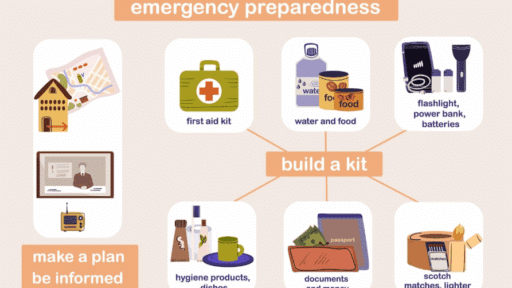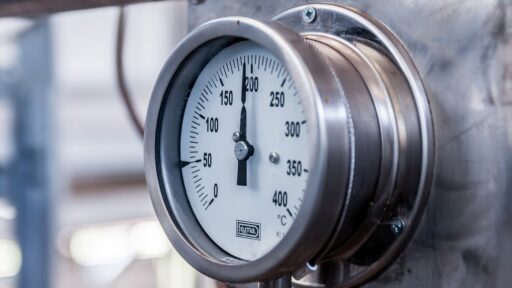As solar energy storage systems become increasingly vital for home energy independence, the critical role of thermal management in battery performance cannot be overstated. Temperature fluctuations pose a significant challenge for lithium ion solar battery systems, potentially reducing their efficiency by up to 50% and cutting their lifespan in half. Without proper thermal regulation, homeowners risk not only diminished performance but also safety hazards and premature system failure. This article explores essential thermal management strategies that installers must implement to maximize battery longevity and protect their clients’ investments. From advanced cooling technologies to intelligent monitoring systems, understanding these crucial elements helps ensure optimal performance in any climate while maintaining the robust safety standards demanded by modern energy storage solutions.
Why Thermal Management Dictates Lithium-Ion Solar Battery Lifespan
The relationship between temperature and lithium-ion battery performance represents a critical factor in solar energy storage systems. At the chemical level, high temperatures accelerate the breakdown of the electrolyte and protective layers within battery cells, while extreme cold significantly reduces ion mobility. These temperature effects manifest in both immediate performance issues and long-term degradation patterns.
Research from the National Renewable Energy Laboratory (NREL) demonstrates that operating batteries above 77°F (25°C) triggers an exponential acceleration in capacity loss. The industry-standard “10°C rule” indicates that every 10°C (18°F) increase in operating temperature roughly doubles the rate of chemical degradation. For example, a battery system operating consistently at 95°F instead of 77°F could lose capacity twice as quickly, potentially reducing its effective lifespan from 15 years to just 7-8 years.
Beyond gradual degradation, temperature extremes pose immediate safety risks through thermal runaway – a dangerous chain reaction where rising internal temperatures trigger additional heat generation. Modern lithium-ion cells begin experiencing stress at 140°F (60°C), with thermal runaway possible above 176°F (80°C). This phenomenon can lead to cell rupture, gas release, and in severe cases, fire. Industry data shows that approximately 28% of catastrophic battery failures stem from inadequate thermal management, highlighting the critical importance of temperature control in system design and maintenance.
Core Components of Solar Battery Thermal Management Systems
Passive vs Active Cooling Technologies
Modern solar battery systems employ sophisticated thermal management solutions that balance efficiency with cost-effectiveness. Leading manufacturers like Anern have developed passive cooling systems that utilize phase-change materials (PCMs) embedded within battery compartments to absorb excess heat during peak operation. These materials, typically paraffin-based compounds, transition between solid and liquid states to maintain optimal temperature ranges without energy input. Heat spreaders, constructed from highly conductive materials like copper or graphene, distribute thermal energy evenly across battery modules, preventing localized hot spots.

Active cooling systems, while more complex, offer precise temperature control through liquid cooling loops. These systems circulate coolant through channels integrated into battery packs, actively removing heat during charging and discharge cycles. Advanced designs incorporate variable-speed pumps that adjust flow rates based on thermal load, optimizing energy consumption while maintaining ideal operating temperatures.
Intelligent Temperature Monitoring Networks
Effective thermal management relies on comprehensive monitoring networks that track temperature variations at multiple levels. Strategic sensor placement includes cell-level thermistors that monitor individual battery temperatures, module-level sensors that track thermal gradients, and ambient temperature sensors that measure environmental conditions. These sensors integrate with Battery Management Systems (BMS) through redundant communication protocols, ensuring uninterrupted monitoring even if primary channels fail.
Real-time data logging systems capture temperature readings at one-minute intervals, creating detailed thermal profiles that help predict and prevent potential issues. The monitoring network implements N+1 redundancy, with backup sensors automatically engaging if primary units malfunction. This multi-layered approach enables predictive maintenance interventions before thermal issues can impact battery performance or safety.
Installation Best Practices for Thermal Control
Site-Specific Environmental Assessment
Successful thermal management begins with a comprehensive site assessment that evaluates local environmental conditions. Installers must analyze historical temperature data, measuring both seasonal extremes and daily fluctuations. Using thermal imaging cameras, technicians identify potential heat sources like HVAC units, dryer vents, or reflective surfaces that could impact battery enclosure temperatures. Humidity levels require particular attention, as moisture can affect cooling efficiency and create condensation risks inside enclosures.

Critical measurements include recording temperature variations across proposed installation zones throughout different times of day. Shading analysis helps identify optimal placement away from direct sunlight while maintaining adequate ventilation clearances. Installers should document prevailing wind patterns and any microclimate factors that could influence thermal performance.
Battery Enclosure Configuration Strategies
Proper enclosure configuration represents the foundation of effective thermal management. Enclosures must meet minimum IP65 weather protection standards while incorporating strategic ventilation features. Installation teams should prioritize thermal-resistant materials with specific conductivity ratings below 0.5 W/mK for outer shells. Maintaining minimum clearances of 6 inches between battery modules and 12 inches from walls ensures adequate airflow circulation.
For multi-battery installations, staggered configurations prove most effective at preventing heat accumulation. Wall-mounted systems require additional thermal isolation from building surfaces, typically achieved through specialized mounting brackets with thermal breaks. Ground-mounted solutions benefit from elevated platforms that allow underside cooling. All installations must incorporate dedicated thermal expansion zones and integrate with existing building thermal management systems when possible, while strictly adhering to NEC Article 480 requirements for battery room ventilation and safety spacing.
Advanced Safeguards: Overcharging Prevention and Cell Balancing
Multi-Layer Overcharge Protection Systems
Advanced battery protection requires sophisticated overcharge prevention mechanisms operating at multiple levels. Primary voltage monitoring circuits continuously track cell voltages, implementing immediate current reduction when readings approach 4.2V per cell. Temperature-triggered charge controllers add a second layer of protection by reducing charging rates when cell temperatures exceed 95°F (35°C). These systems employ dynamic current throttling that automatically adjusts charging speeds based on real-time thermal conditions, preventing heat buildup before it becomes problematic.
Active Cell Balancing for Thermal Uniformity
Cell imbalances create dangerous thermal hotspots when stronger cells overwork to compensate for weaker ones. Active balancing systems redistribute energy between cells during charging cycles, maintaining temperature uniformity across the entire battery bank. The Battery Management System (BMS) employs sophisticated algorithms to identify cells operating outside optimal temperature ranges, then initiates targeted balancing procedures during the absorption phase when voltage differences are most pronounced. This process requires periodic maintenance checks every 90 days to verify balancing effectiveness and adjust parameters as cells age.
Installers must implement verification protocols that include thermal imaging scans during peak charging periods to identify potential balance issues early. The maintenance schedule should include quarterly cell resistance testing and voltage deviation analysis to catch emerging thermal patterns before they impact system performance. Modern systems log these parameters automatically, creating detailed performance histories that help predict when preventive balancing interventions become necessary.
Maximizing Solar Battery Performance Through Thermal Management
The implementation of robust thermal management systems stands as a cornerstone of reliable solar battery performance and longevity. Through careful attention to temperature control mechanisms, from passive cooling solutions to sophisticated monitoring networks, installers can significantly extend battery life while maintaining optimal efficiency. The financial implications of inadequate thermal management – including accelerated degradation, reduced capacity, and potential system failures – far outweigh the initial investment in proper thermal control measures. By following industry-standard installation practices, implementing comprehensive monitoring systems, and maintaining regular balancing protocols, solar professionals can deliver systems that consistently meet performance expectations while ensuring maximum return on investment for their clients. As the solar storage industry continues to evolve, prioritizing thermal management will remain crucial for achieving the reliability and longevity that homeowners expect from their energy storage solutions. Take action today by reviewing your installation procedures and upgrading thermal management protocols to protect your clients’ investments and ensure long-term system success.








